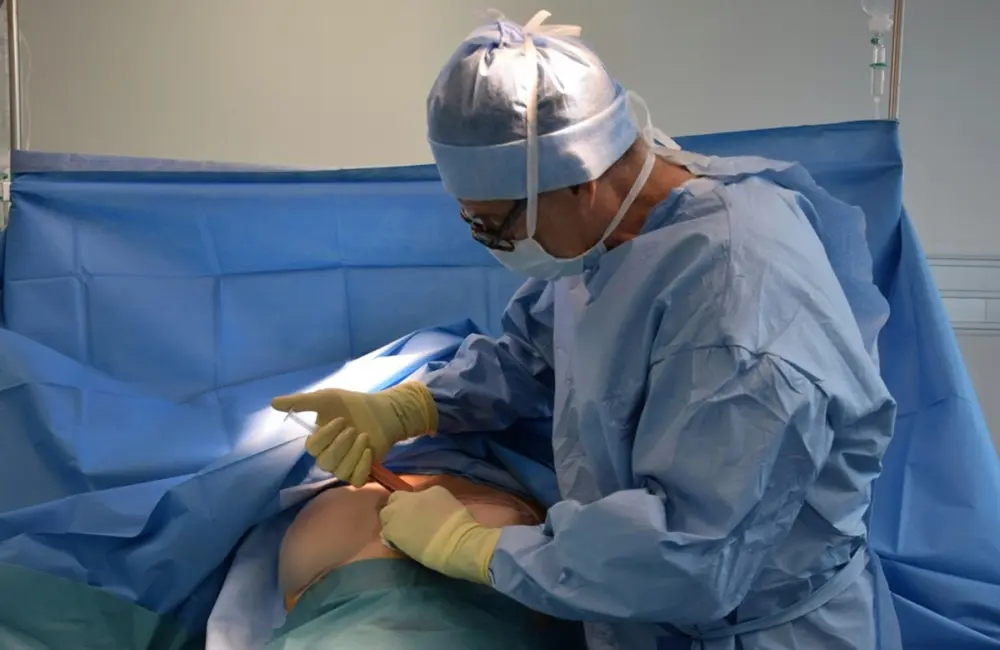Breast Enlargement
What is the Best Care for Breast Surgery Scars?
Whether you’ve had breast surgery for medical or cosmetic reasons, in the end, caring for your scars is a key component of the recovery process. Not only does it concern the way things look (which does matter to many), but it’s also about helping your skin recover and feel comfortable in the process. Scars are a natural product of the healing process, but the degree to which you tend to them can play a role in how they soften and fade in time. The good news? There are easy, low-key ways to support your skin as it heals.

Are there any steps we can take to help prevent scarring? From keeping the area clean and moisturised to knowing the right time (and how) to start using products like silicone sheets or massage, it is very manageable. In this article, we’ll take you through the best care tips for breast surgery scars, so you can rest easy, be aware, and feel more confident and comfortable in your healing.
Understanding Breast Surgery Scars
Scars are your body’s ticket to healing after an operation. When you cut your skin, your body tries to close the wound by producing collagen, a protein that helps knit the tissue back together. Scars of breast surgery will often be red/pink and slightly raised (or pale if in someone with a dark skin colour) initially and may feel firm (or tight). Over time, they tend to fade and flatten, but this may take several months to a year.
Everyone’s body heals differently, and various factors influence the appearance of a scar. Skin tone, age, genetics, and even your overall health can all be factors. The type of surgery you had and the skill of your surgeon matter too, as some incision techniques leave finer scars than others. How you take care of your skin after surgery matters, too.
The type of scar depends on the procedure and may be located around the areola, under the breast fold, or vertically down to the breast. There are a few reasons for that: First, it’s totally normal for them to look more noticeable at the beginning. However, with some patience and the proper care, they typically soften and fade over time. The first step in assisting them to heal as smoothly as possible is to understand how scars develop.
Post-Operative Care: The First Few Weeks
The initial weeks following breast surgery are a time for your body to rest and begin healing. This early period is when your scars are most delicate, and gentle care is essential. You should follow your surgeon’s specific instructions first, but here are some general pointers to keep in mind.
First of all, the wound should be kept dry and clean. In general, you’ll be advised to avoid soaking in a bath or swimming until the incisions are completely closed. It’s okay to take showers after a day or two, but be gentle and pat the area dry rather than rubbing.
You may have dressings or a surgical tape covering the incision. Do not remove or change these unless your doctor tells you to. It protects the area, allowing for a reduced chance of infection and to promote healing. Always check with your surgical team if you experience an unusual amount of redness, swelling, or discharge.
Post-surgery bras that are supportive can also be helpful. They take the pressure off the healing area and can help reduce swelling. However, as long as your bra fits comfortably and isn’t rubbing or irritating the incision sites, it’s safe to wear.
During these first few weeks, avoid stretching, lifting, or pushing in any way that could strain the chest. It’s not unusual to feel a little sore or a bit engorged; just give your body the time to let things settle.
In other words, be kind to yourself, take it easy, and keep it clean and simple. That strong base will give you a better chance of healing in the long run.
Scar Treatment Options
After your incisions have healed and your surgeon gives you the go-ahead, there are a few things you can do to support the healing of your scar. Everyone’s skin is unique, so it’s essential to try different products. Here’s a little guide through the more common alternatives:
Silicone sheets
One of the most widely reviewed and recommended scar treatments, this solution is effective for reducing and fading scars. They are soft, pliable strips that adhere over the scar to create a protective shield that hydrates the area and flattens raised scars. They’re reusable, easy to wear under clothes, and typically used for several hours a day for weeks or months.
Scar gels
These are also typically silicone-based and work similarly to the sheets, but as a gel that is applied directly to the scar. They’re a good option if your scar is in a tricky place or for those who want something more inconspicuous. They are clear and can be worn under clothing or makeup.
Massage
In some patients, gentle massage of the scar can be beneficial once wound healing is complete to soften and flatten the scar, as well as decrease vascularity. Gently massaging the skin with a plain moisturiser or a scar cream in small circular movements, using light pressure, can help the skin soften over time.
Steroid treatments
If scars become thick, raised, or itchy (such as keloid or hypertrophic scars), your doctor may suggest steroid injections. These diminish inflammation and flatten the scar, but they are typically recommended only if other approaches haven’t worked.
Natural remedies
Some people try natural oils, such as rosehip, vitamin E, or aloe vera. While they can keep the skin moisturised, evidence for their effect on scar appearance is limited. Still, if your skin tolerates them well, they can be part of a gentle, feel-good routine.
No matter how you do it, it all comes down to consistency.
What to Avoid for Optimal Healing
When it comes to healing well after breast surgery, what you avoid doing is just as important. Some general behaviours and exposures can make scars more noticeable or prolong the healing process, so it’s really worth being a little mindful.
First up: sun exposure. UV rays can cause the healing scar to darken and appear more prominent, and in some cases, even make it permanent in colour. Whether your scars are visible or not, you should never let them see the light of day without being covered with clothing or sunscreen at least SPF 30+ (once they’ve fully healed, that is).
Smoking is another big one. It reduces blood flow to the area, which in turn can slow down healing and cause complications. If you smoke, scaling back (or, better yet, quitting) could have a significant effect on how your scars heal.
Don’t scratch at the area or pick at sores, even if it’s itchy. This can interfere with healing and increase the chance of developing an infection or thickened scar.
Pull back on aggressive skincare products and avoid anything that contains strong exfoliants, alcohol, or fragrance around the incisions until your skin is well on its way to healing.
And one last thing: Don’t return to strenuous exercise too quickly. Movements that stretch or stress your chest can tug at the scar tissue, potentially causing discomfort.
Taking it slow now means better results later.
Long-Term Management and When to Seek Help
A scar can change within months, and even up to a year after breast surgery. Often, they fade slowly and become more malleable over time and with attention. However, if a scar becomes raised, starts to ache, feels thick, or is otherwise worsening rather than improving, it’s worth consulting your surgeon or GP. There’s never any harm in asking; it’s better than sitting around wondering.
Even if you take good care of your skin, you might still end up with a scar that you’re unhappy with or that makes you feel less confident. If that does, you’re not completely out of luck. Medical intervention can be sought to treat long-term scars.
Steroid injections may help flatten thick or raised scars, such as keloids or hypertrophic scars. There’s also laser therapy, which can minimise redness and flatten out the texture of the scar. Surgical revision may be recommended for more severe cases to improve the appearance or position of the scar.
You may also be referred to a dermatologist or plastic surgeon who specialises in scar treatment. They can walk you through what’s realistic and what’s likely to be helpful, based on your skin type and the scar’s characteristics.
Keep in mind: Scars are a natural part of the healing process, but that doesn’t mean you have to live with them, especially if they’re painful, either physically or emotionally. Some support and direction can do a world of good, whether you’re simply seeking reassurance or contemplating more advanced treatments.
Conclusion
Taking care of breast surgery scars is a slow and steady process, but the time and effort you invest are genuinely worth it. When the right techniques are practised consistently, you will see a difference in how your skin heals. From practising gentle wound care in the first days to treating scarring with silicone products or massage down the line, you’re simply supporting your body’s healing process with these measures.
Skipping things like sun exposure and smoking is vital. And if anything doesn’t feel right, don’t be afraid to consult an expert. Good, knowledge-based care doesn’t just make scars look better, it can make you feel more comfortable and confident during your healing journey.







